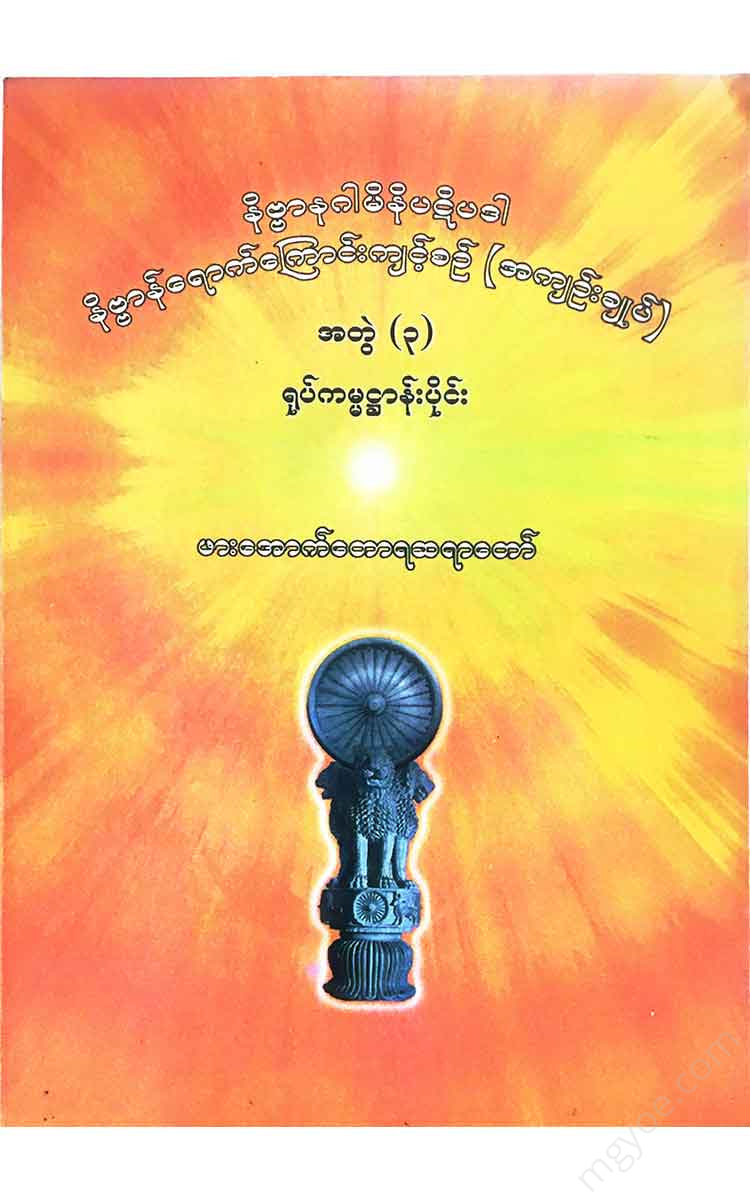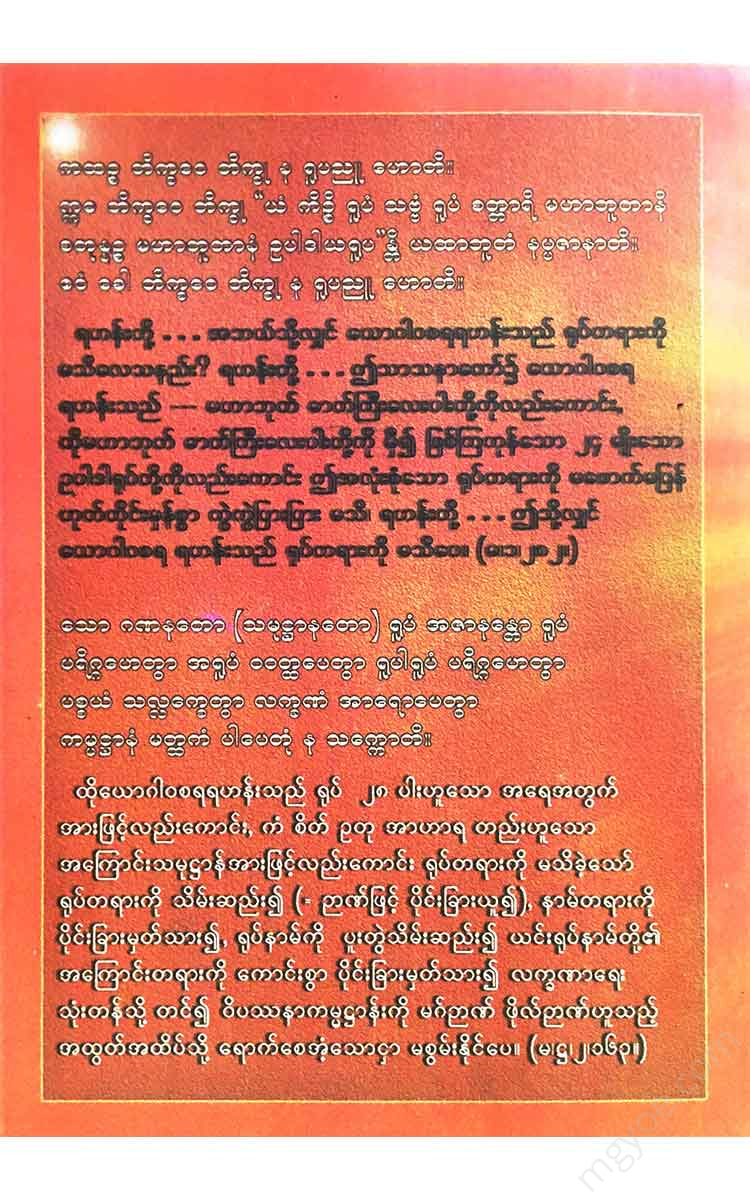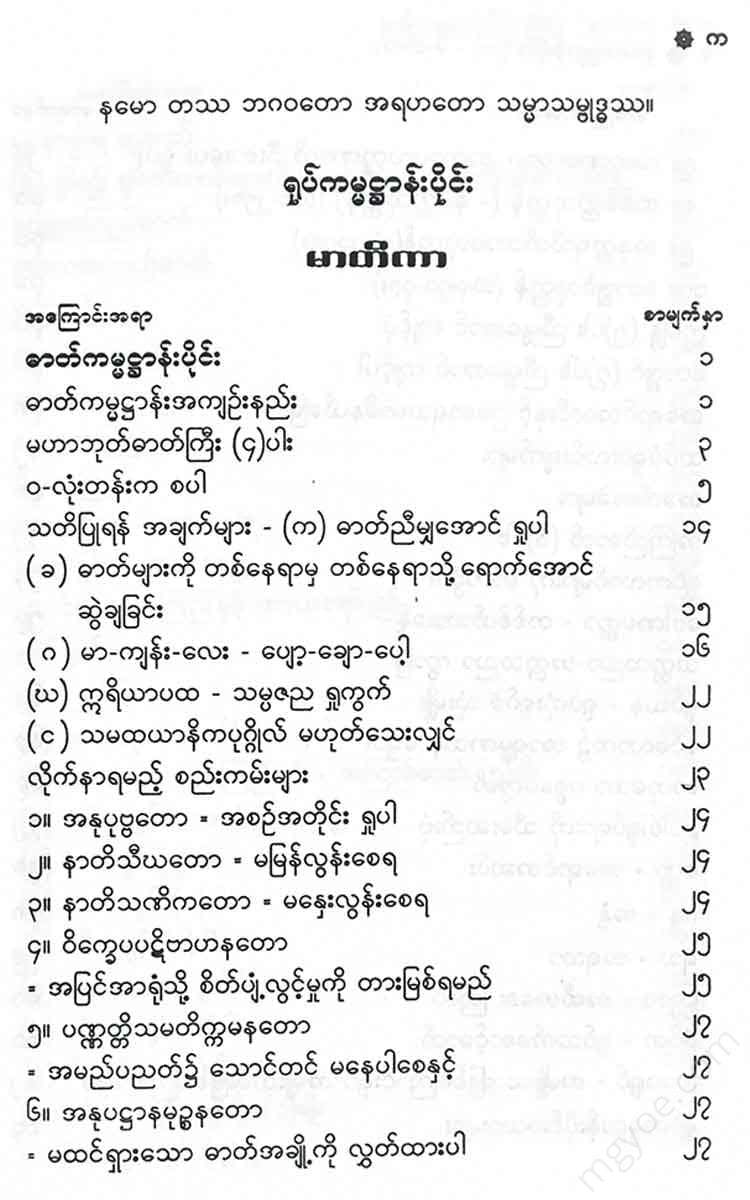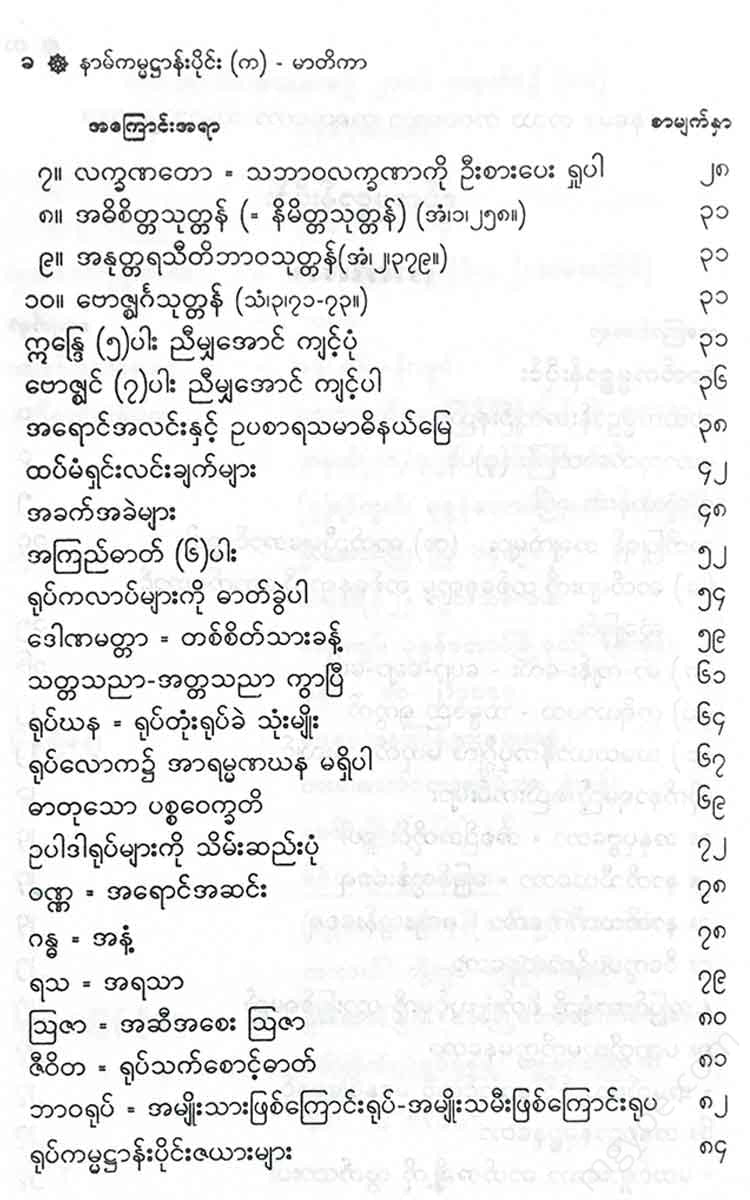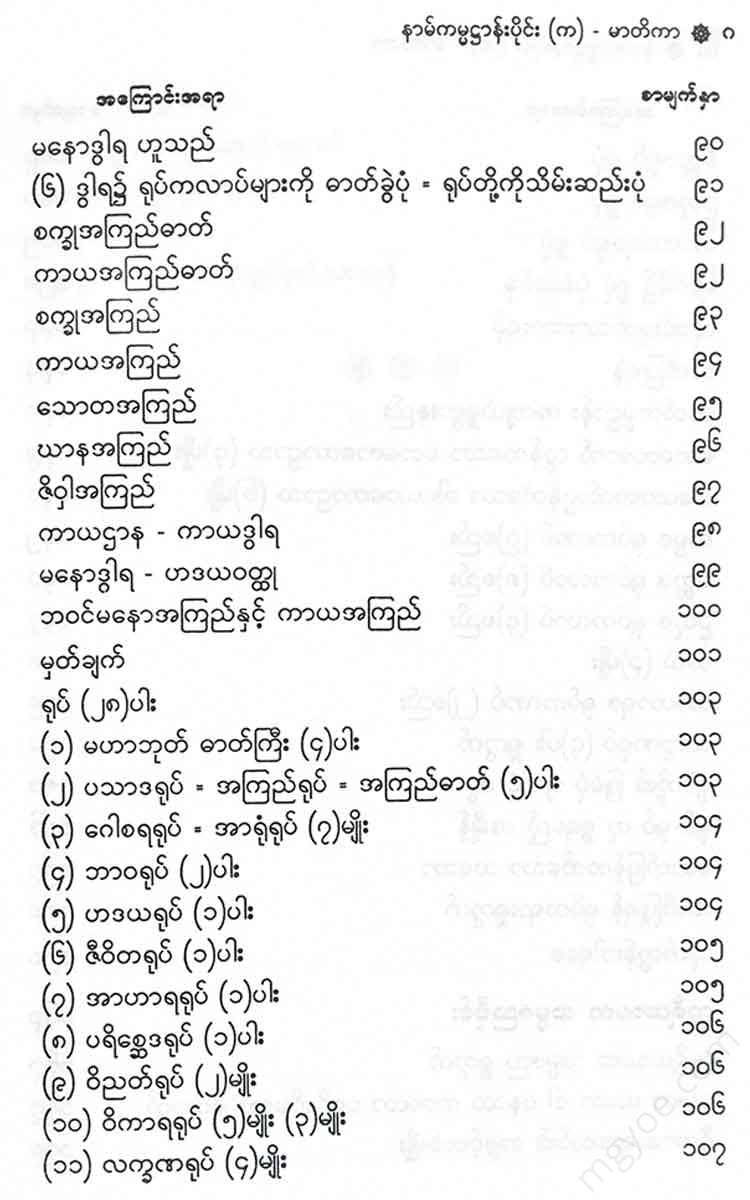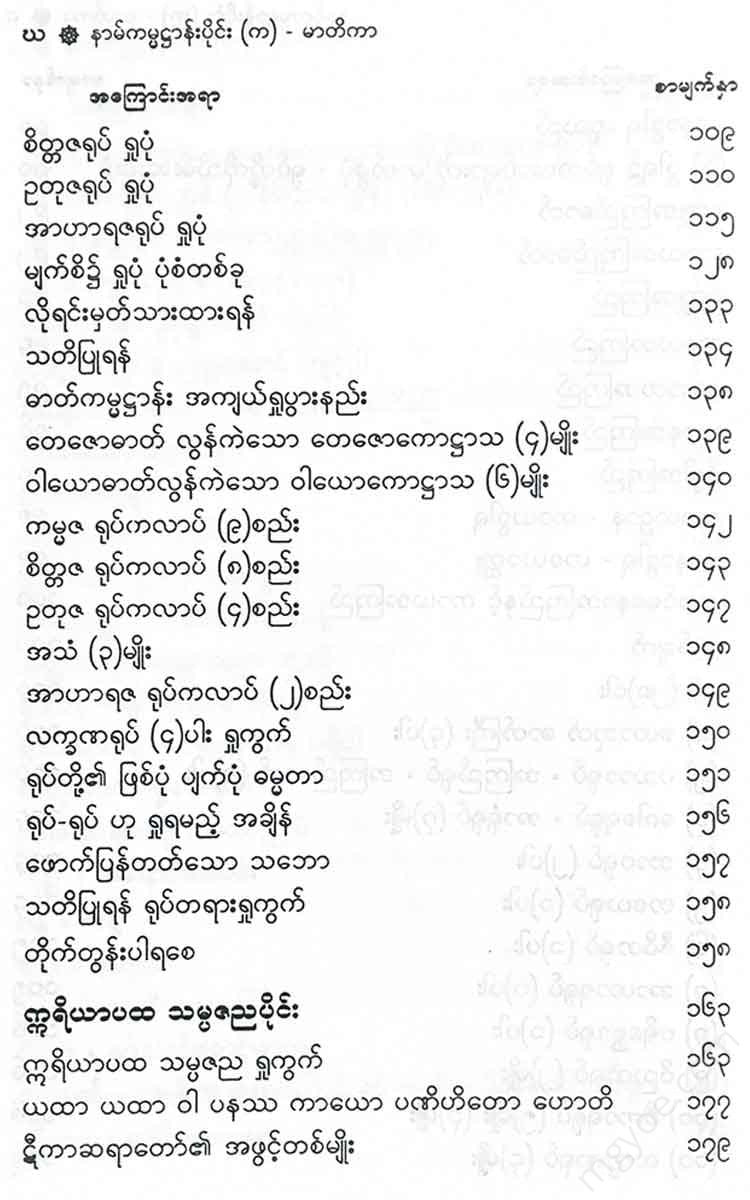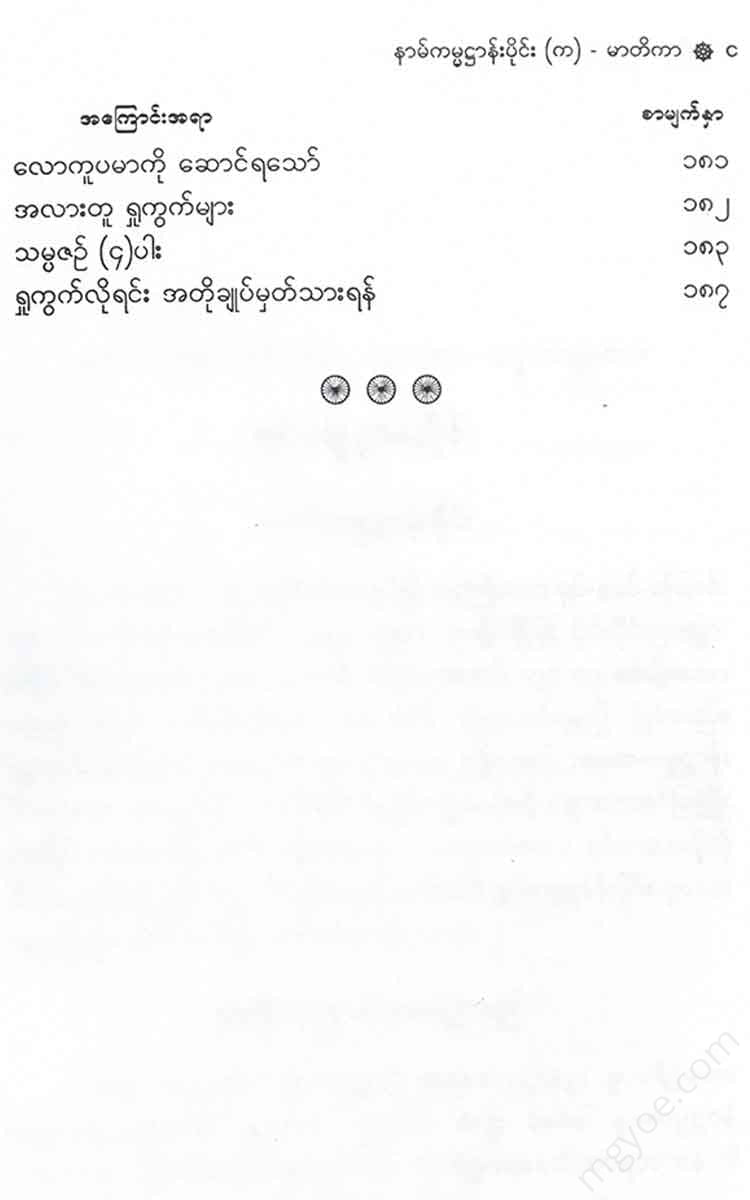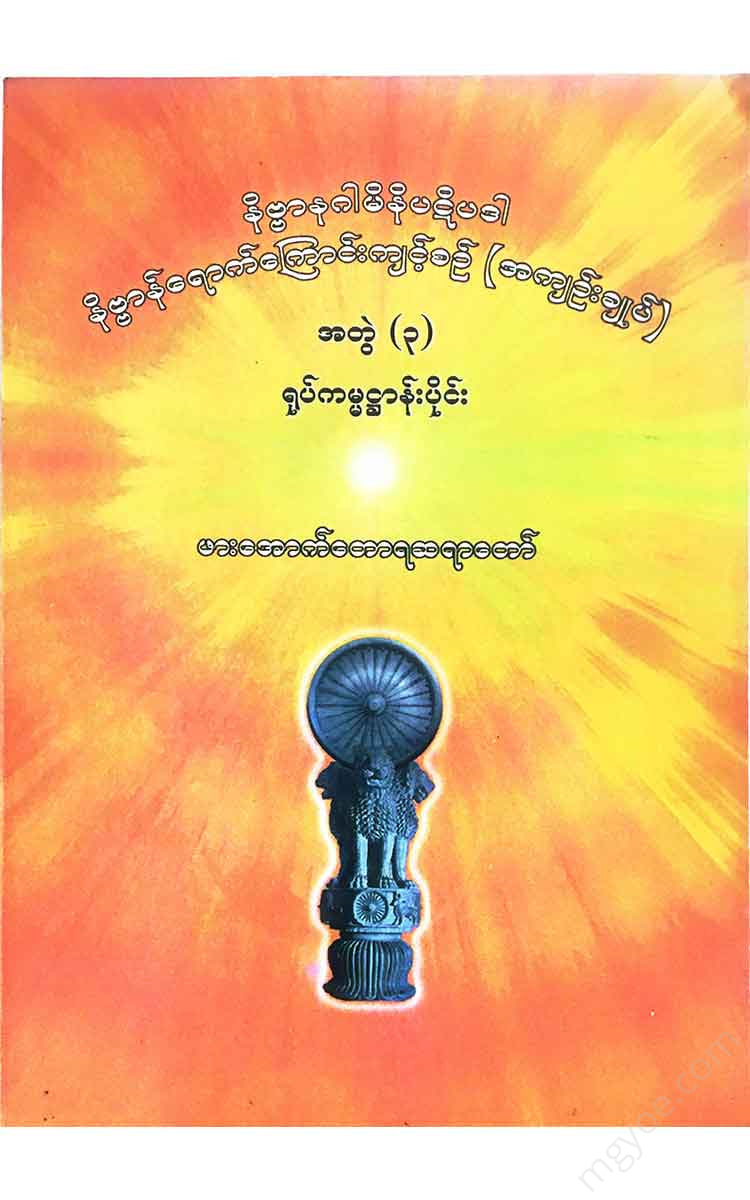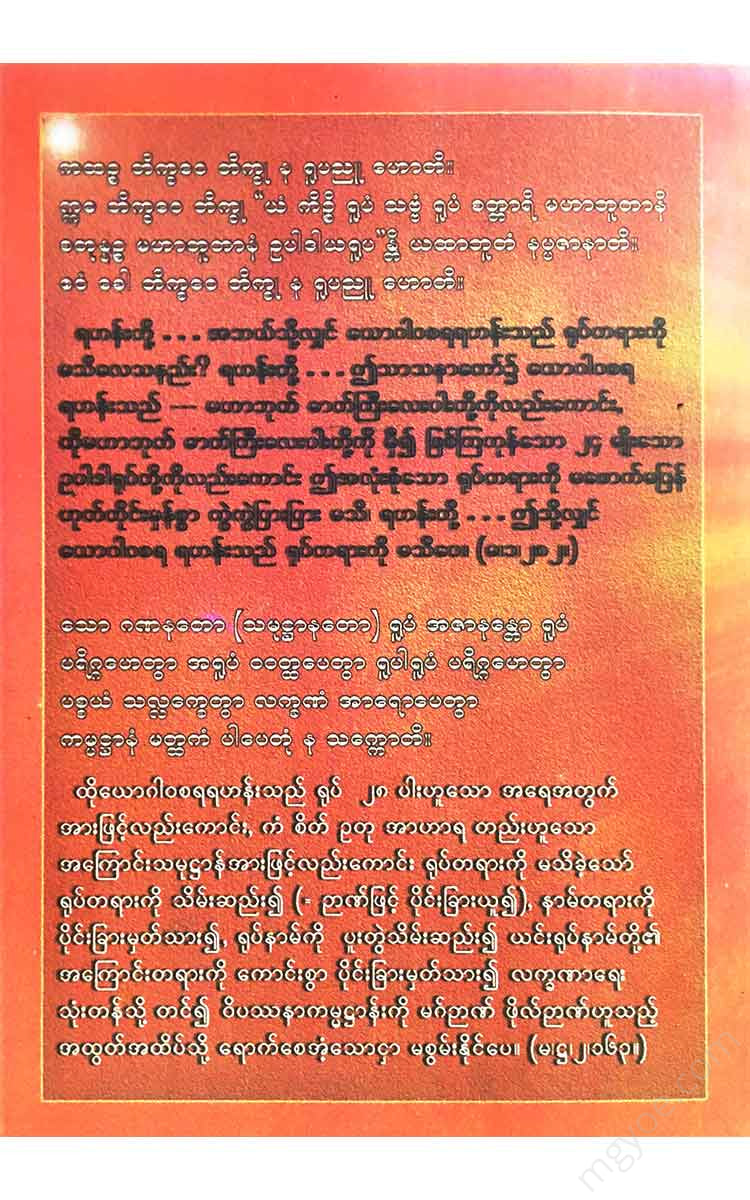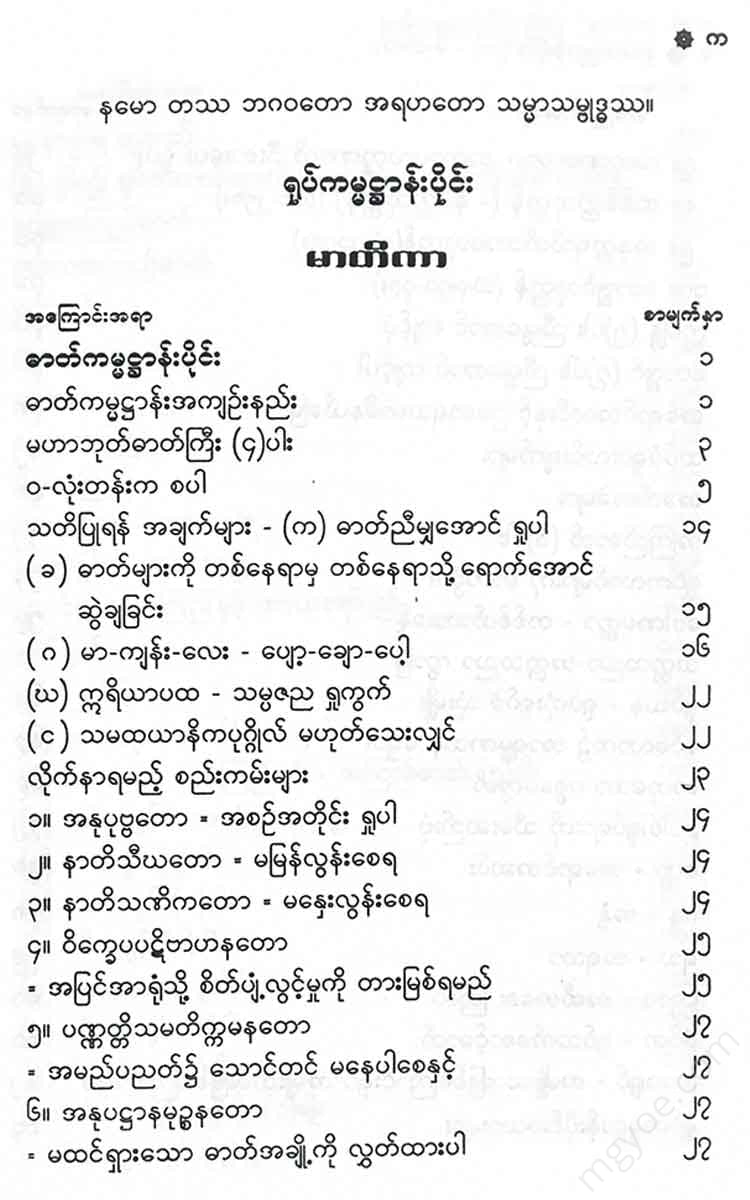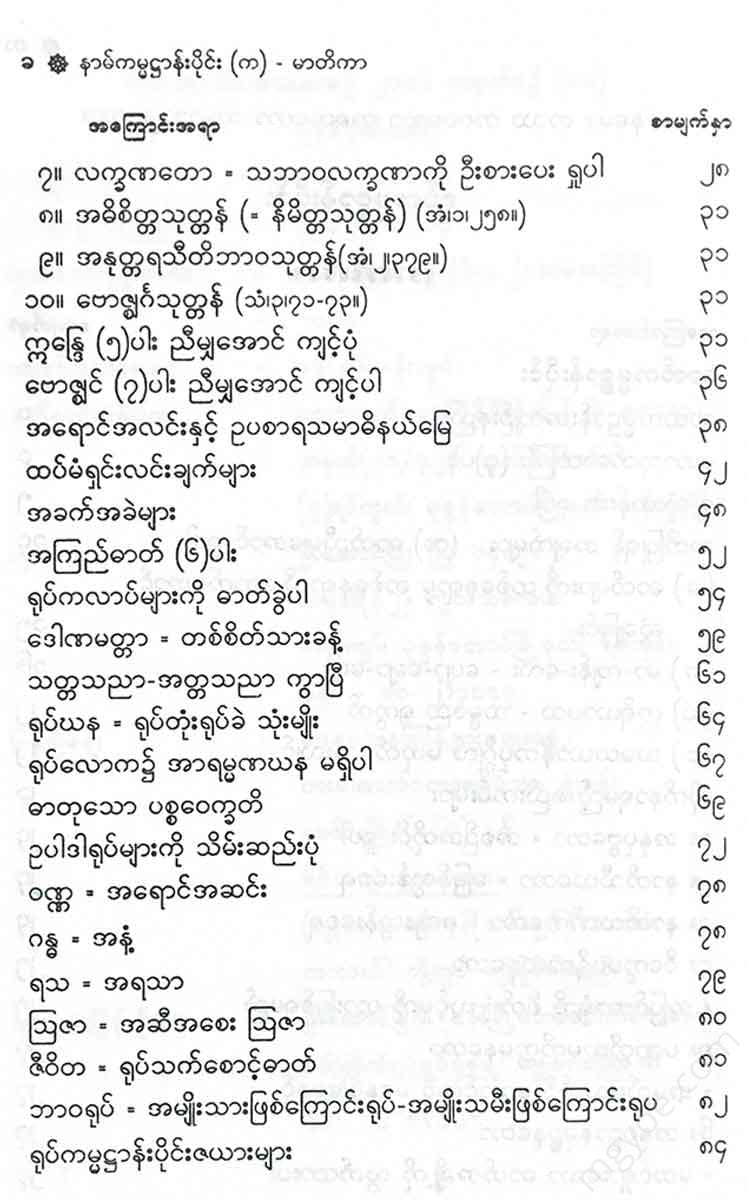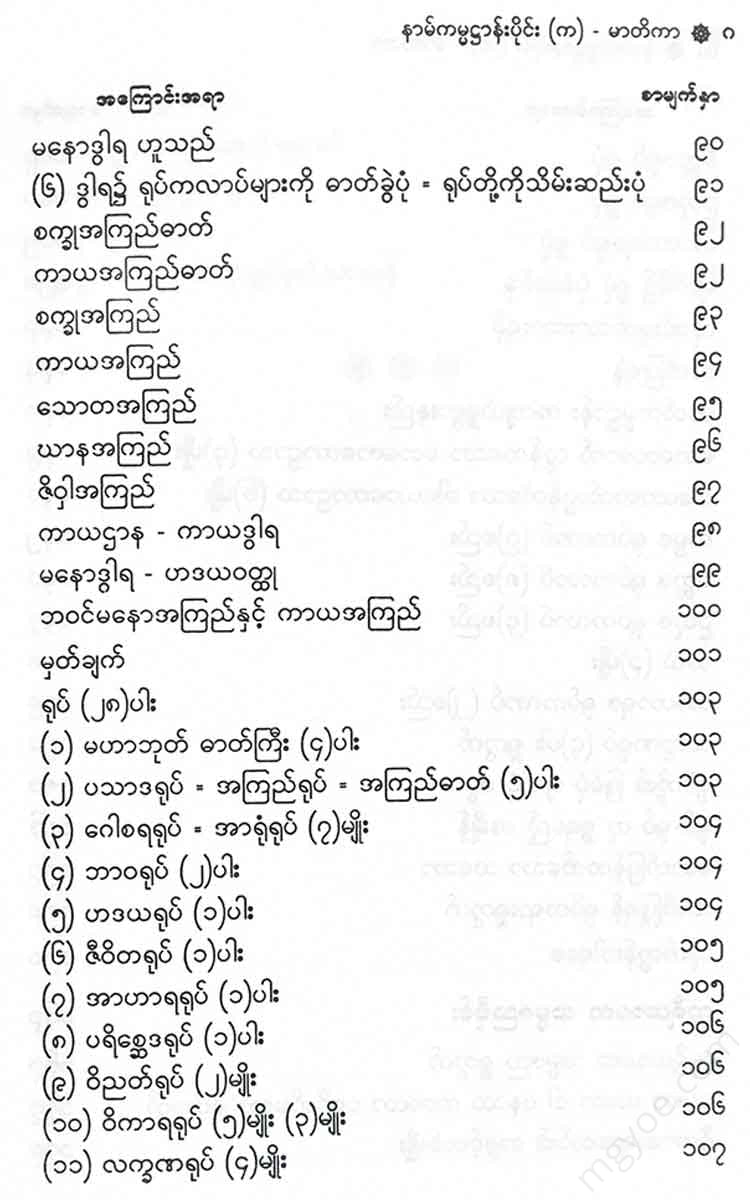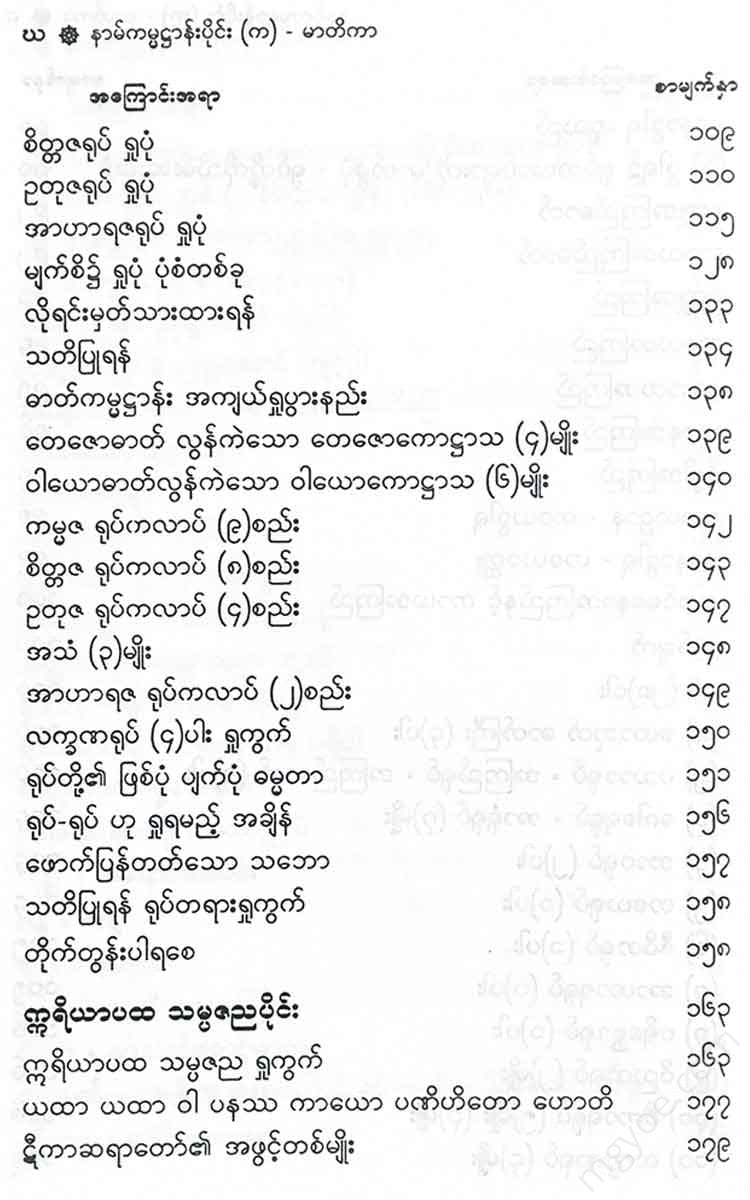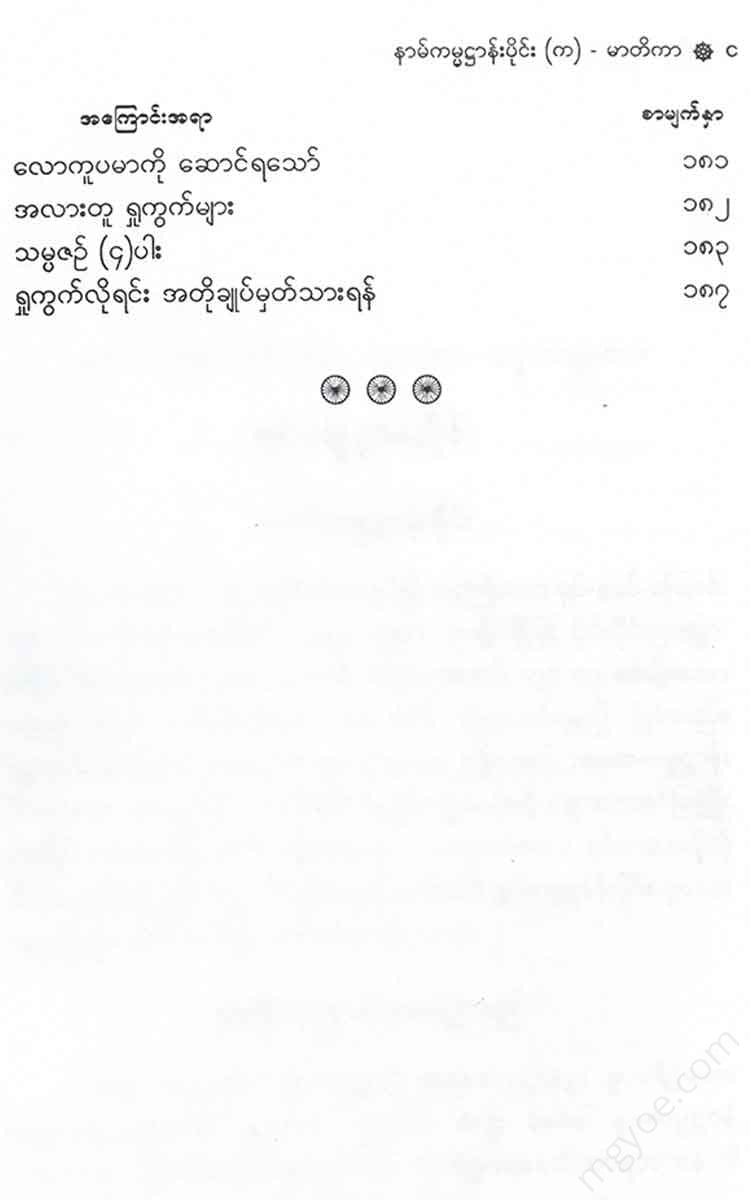Other Websites
Venerable Phor Aok Tora Sayadaw - The Practice of Attaining Nibbana (Summary) Volume (3)
Venerable Phor Aok Tora Sayadaw - The Practice of Attaining Nibbana (Summary) Volume (3)
Couldn't load pickup availability
In order to be able to distinguish and understand the three types of knowledge, namely, the three types of knowledge, the three types of concentration, namely
I will continue to write about the section (- How to distinguish with the mind) under the name of the section on physical meditation.
Brief method of energy meditation
The second kind of action is physical action - physical action is physical action. Physical action is physical action. The physical action is physical action. The Supreme Being
In the Samatha section, there are (40) Samatha-kammathāna, which is the Samadhi section. In the Vipassana section, there are two types of meditation: Rupa-kammathāna and Nam-kammathāna. Rupa-pariggaha = grasping and distinguishing form with the mind, and Arupa-pariggaha = grasping and distinguishing name with the mind. Of these two, the Buddha spoke of the meditation on form:
1. Either through the power of the method of introspection,
2. Either through the power of the wide-open heart method
He preached the meditation on the four elements, which is the process of discerning the individual characteristics of the four great elements, known as the four elements. (Abhi, 2, 252. Matha, 1, 280. Di, 2, 314.)
Of these two, this book will first present the brief method of developing the essence meditation, and then the detailed method of developing the essence meditation will be presented later.
Punāspraṇa bhikkhuvā īmāmeva kaiyam yatthīta yattapānihitā sāṃ pitsavātakaṭhāti: “Atthi īmāsmīn kaya patiṭhātu apoṭhātu tejādātu vayodhatu” (Ma, 1, 73.)
Monks... Another way is that a monk, a Yogavasara, dwells contemplating each of these elements, each one by its nature, saying, "In this great body there is the element of earth, there is the element of air, there is the element of air, there is the element of wind." (Mat. 1, 3.)
This is the teaching above, which is the foundation of the meditation on the elements, which is found in the Mahasatipatthana Sutta, the Samsara Manasikara. A person practicing yoga should place his hand, which is the mind, between the bones, between the veins, between the flesh, and between the skin of this great physical body, and observe with his mind the four great elements, namely, the earth element, the air element, the air element, and the air element, and see with his mind the characteristics of each of them. If you cannot observe easily or see them in this way, then place your hand, which is the mind, between the bones, between the veins, between the flesh, and between the skin of this body, and observe from the head to the feet, from the head to the feet, as follows.
Four (4) great powers
1. Geography
Three types of planets (Garupathavi) Three types of planets (Lahupathaavi)
1. Hardness 4. Softness
2. Roughness 5. Smoothness
3. Respectful attitude 6. Light-heartedness
2. Apocalypse
1. Drainage 2. Formation
3. Tezos
1. Hotness 2. Coldness
4. Vayotsav
1. Supportive 2. Repulsive
Hardness, hardness, softness, and lightness are the natural characteristics of the earth element, fluidity and structure are the natural characteristics of the air element, hotness and coldness are the natural characteristics of the fire element, support and resistance are the natural characteristics of the air element, and repulsion and resistance are the functions of the air element.
First, re-establish the concentration of the fourth jhana of anapana that you have already attained. If desired, establish concentration up to the fourth jhana of adhātakaṇa. (Do not forget to establish concentration every time you meditate.) Then -
1. Start from a place where arrogance is evident, and develop the sense of arrogance from the head.
See it all over your body, from your feet to your toes. Similarly -
2. The sense of cruelty begins at a place where cruelty is evident. P.
3. The sense of respect begins with a place where respect is evident. P.
4. The sense of softness begins at a place where softness is evident. P.
5. The sense of smoothness begins with a place where smoothness is evident. P.
6. Start from a place where lightness is evident. P.
7. The sense of leakage begins at a point where the leakage is evident. P.
8. The sense of organization begins with a place where organization is evident. P.
9. The feeling of heat begins at a place where heat is evident. P.
10. From a place where coldness is evident, the sense of coldness is felt. P.
11. The meaning of support begins with a place where support is evident. P.
12. Start from a place where the push is obvious.
Look all over your body, from head to toe.
If you observe any of these (12) elements, let it be spread throughout the whole body, and let it be seen throughout the whole body. First, observe the element of hardness, so that it is seen throughout the whole body. If you succeed, continue to observe the other elements. If you fail, begin with the element of repulsion. The element of repulsion is very helpful in seeing the other elements with the mind.
Start from the beginning.
Of the 33 consonants, it is true that the consonants are క-గీయ, భ-క్వాలు, etc., but in teaching a child, the vowels are easier, so we start with the vowels. Similarly, the nature of the force of the sound is the same as the vowels. Most yogis find it easy to learn. Therefore, if you are not successful with the above system, try learning from the vowels.
The good monk should focus his mind on the center of the head. When you breathe in and breathe out, focus your mind on the feeling of pushing and pulling. When you breathe in and breathe out, focus your mind on the feeling of pushing and pulling, do not look at the air. It is like the feeling of pushing and pulling inside the mouth when chewing alms. When you notice the feeling of pushing, focus your mind on that feeling of pushing and pulling.
If you do not succeed with this system, if you want to regain the concentration of the fourth jhana of self-awareness that you have already achieved, then re-establish the concentration of the fourth jhana of mindfulness. When the energy of concentration is full, look again at the nature of repulsion as above.
The fourth jhana of mindfulness or the fourth jhana of mindfulness (as described in this book) is the foundational jhana of the great monk's Vipassana. Develop this jhana until it becomes full of energy and becomes radiant and powerful. It is a rule to be followed whenever you meditate, even when you are having difficulty.
When you see the feeling of pushing clearly in the head, calmly fix your mind on that feeling of pushing. When your mind is calmly fixed on the feeling of pushing, the feeling of pushing will also become very clear. When it appears, gradually follow it with your mind from the inside of the head to the outside of the head until you see the feeling of pushing clearly. Put your mind, which is your hand, between the bones, between the veins, between the flesh, and between the skin, and follow it. When you see the feeling of pushing clearly in the whole head, send your mind to the whole body, including the neck, chest, and abdomen, and put your mind, which is your hand, between the bones, between the veins, and between the skin, and follow it. When you see the feeling of pushing clearly in the whole body, from the head to the feet, the venerable one has succeeded in the development of a feeling of a substance. You have learned to write a complete circle of a whole. If it comes in, it comes out.
